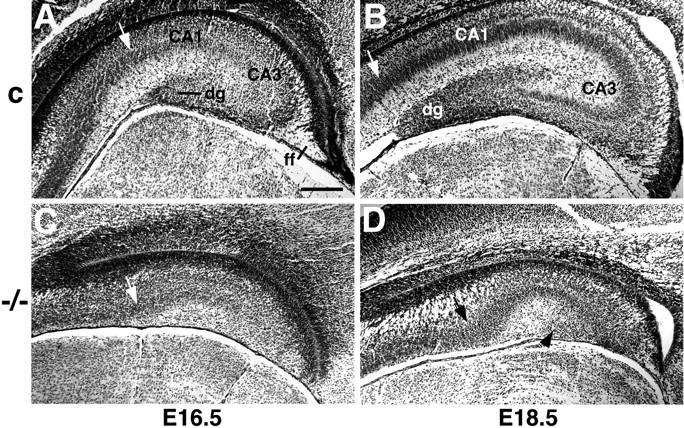Fig. 1.

The hippocampus is reduced in size in theEmx2 mutant and has no morphologically identifiable dentate gyrus. A–D, Nissl-stained coronal sections through the hippocampus of wild-type (A,B) or Emx2 homozygous (−/−) mutant mice (C, D). Arrows indicate the approximate boundary between the embryonic hippocampal pyramidal cell layer and the adjacent subiculum. A,C, Sections from E16.5 littermate mice, matched for rostrocaudal level. The hippocampal pyramidal cell layer is shorter in the Emx2 mutant (C) than in the wild-type embryo (A). The dentate gyrus (dg) and fimbria fornix (ff) have begun to develop in the wild-type embryo (A), but no dentate gyrus can be identified in the mutant and the fimbria fornix is severely shrunken (C). B, D, Sections from E18.5 mice, matched for rostrocaudal level. The size of the hippocampus is markedly different between a wild-type embryo (B) and an Emx2 mutant (D). At E18.5, a morphological dentate gyrus is clearly identifiable in the wild-type embryo (B) but not detectable in the mutant (D).Arrowhead in D indicates a small patch of cells that may represent a residual dentate cell population (compare cells indicated by arrows in Fig.2K,L). Scale bar:A–D, 150 μm.
